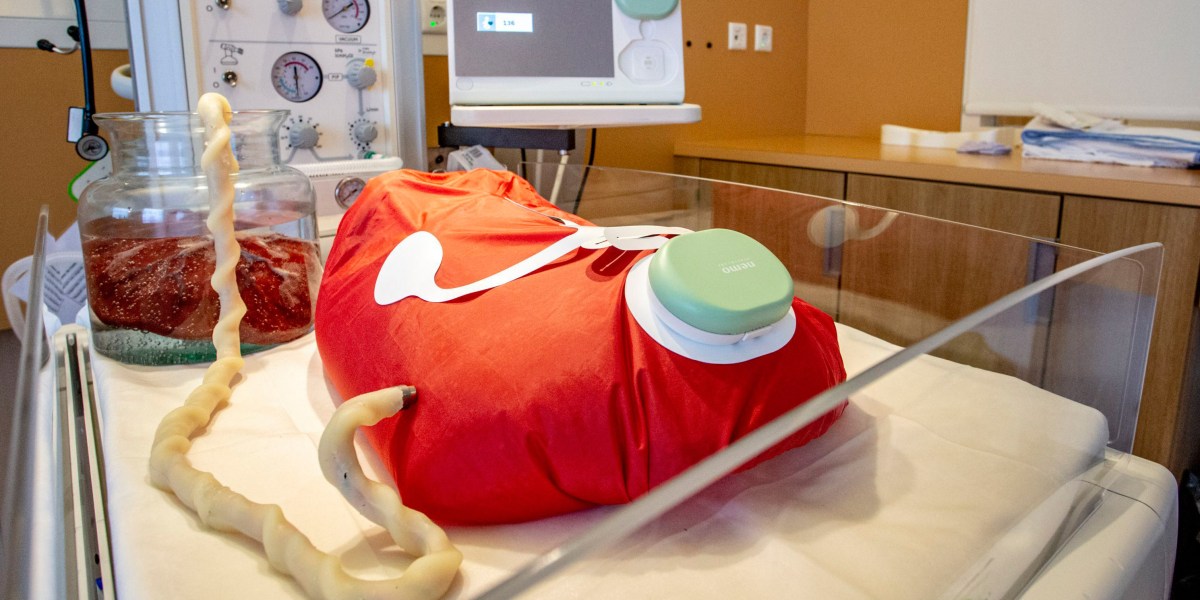Everything you need to know about artificial wombs

The technology would likely be used first on infants born at 22 or 23 weeks who don’t have many other options. “You don’t want to put an infant on this device who would otherwise do well with conventional therapy,” Mychaliska says. At 22 weeks gestation, babies are tiny, often weighing less than a pound. And their lungs are still developing. When researchers looked at babies born between 2013 and 2018, survival among those who were resuscitated at 22 weeks was 30%. That number rose to nearly 56% at 23 weeks. And babies born at that stage who do survive have an increased risk of neurodevelopmental problems, cerebral palsy, mobility problems, hearing impairments, and other disabilities.
Selecting the right participants will be tricky. Some experts argue that gestational age shouldn’t be the only criteria. One complicating factor is that prognosis varies widely from center to center, and it’s improving as hospitals learn how best to treat these preemies. At the University of Iowa Stead Family Children’s Hospital, for example, survival rates are much higher than average: 64% for babies born at 22 weeks. They’ve even managed to keep a handful of infants born at 21 weeks alive. “These babies are not a hopeless case. They very much can survive. They very much can thrive if you are managing them appropriately,” says Brady Thomas, a neonatologist at Stead. “Are you really going to make that much of a bigger impact by adding in this technology, and what risks might exist to those patients as you’re starting to trial it?”
Prognosis also varies widely from baby to baby depending on a variety of factors. “The girls do better than the boys. The bigger ones do better than the smaller ones,” says Mark Mercurio, a neonatologist and pediatric bioethicist at the Yale School of Medicine. So “how bad does the prognosis with current therapy need to be to justify use of an artificial womb?” That’s a question Mercurio would like to see answered.
What are the risks?
One ever-present concern in the tiniest babies is brain bleeds. “That’s due to a number of factors—a combination of their brain immaturity, and in part associated with the treatment that we provide,” Mychaliska says. Babies in an artificial womb would need to be on a blood thinner to prevent clots from forming where the tubes enter the body. “I believe that places a premature infant at very high risk for brain bleeding,” he says.
And it’s not just about the baby. To be eligible for EXTEND, infants must be delivered via cesarean section, which puts the pregnant person at higher risk for infection and bleeding. Delivery via a C-section can also have an impact on future pregnancies.
So if it works, could babies be grown entirely outside the womb?
Not anytime soon. Maybe not ever. In a paper published in 2022, Flake and his colleagues called this scenario “a technically and developmentally naive, yet sensationally speculative, pipe dream.” The problem is twofold. First, fetal development is a carefully choreographed process that relies on chemical communication between the pregnant parent’s body and the fetus. Even if researchers understood all the factors that contribute to fetal development—and they don’t—there’s no guarantee they could recreate those conditions.
The second issue is size. The artificial womb systems being developed require doctors to insert a small tube into the infant’s umbilical cord to deliver oxygenated blood. The smaller the umbilical cord, the more difficult this becomes.
What are the ethical concerns?
In the near term, there are concerns about how to ensure that researchers are obtaining proper informed consent from parents who may be desperate to save their babies. “This is an issue that comes up with lots of last-chance therapies,” says Vardit Ravitsky, a bioethicist and president of the Hastings Center, a bioethics research institute.





